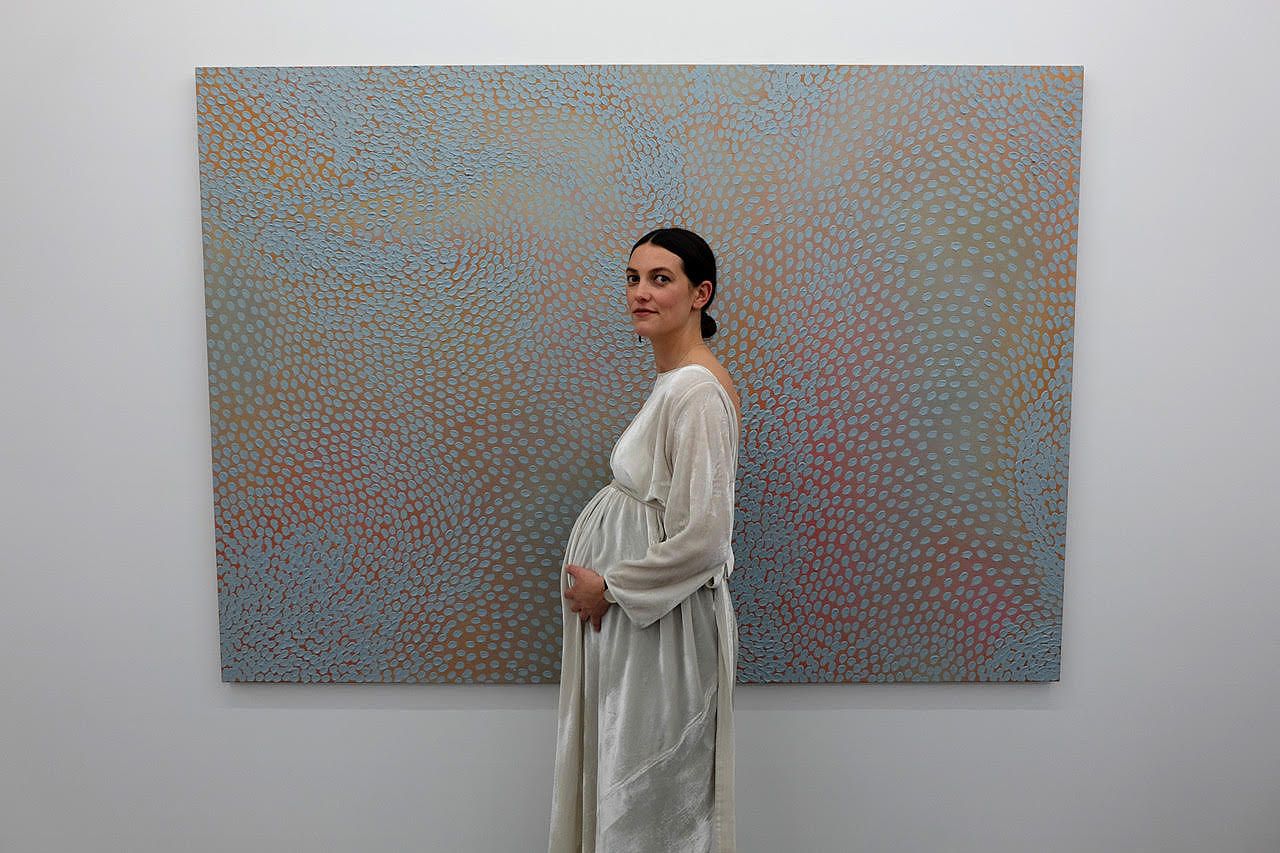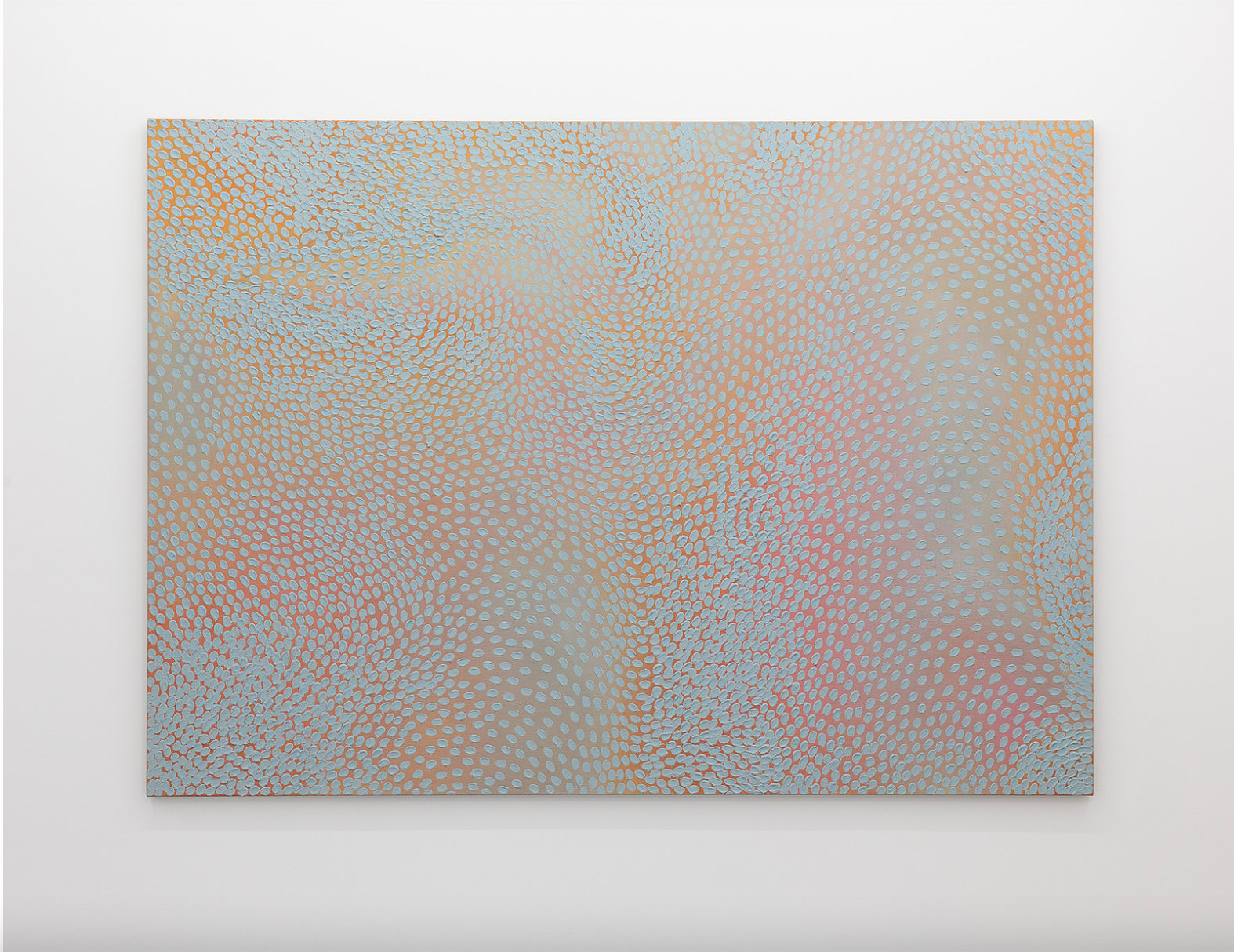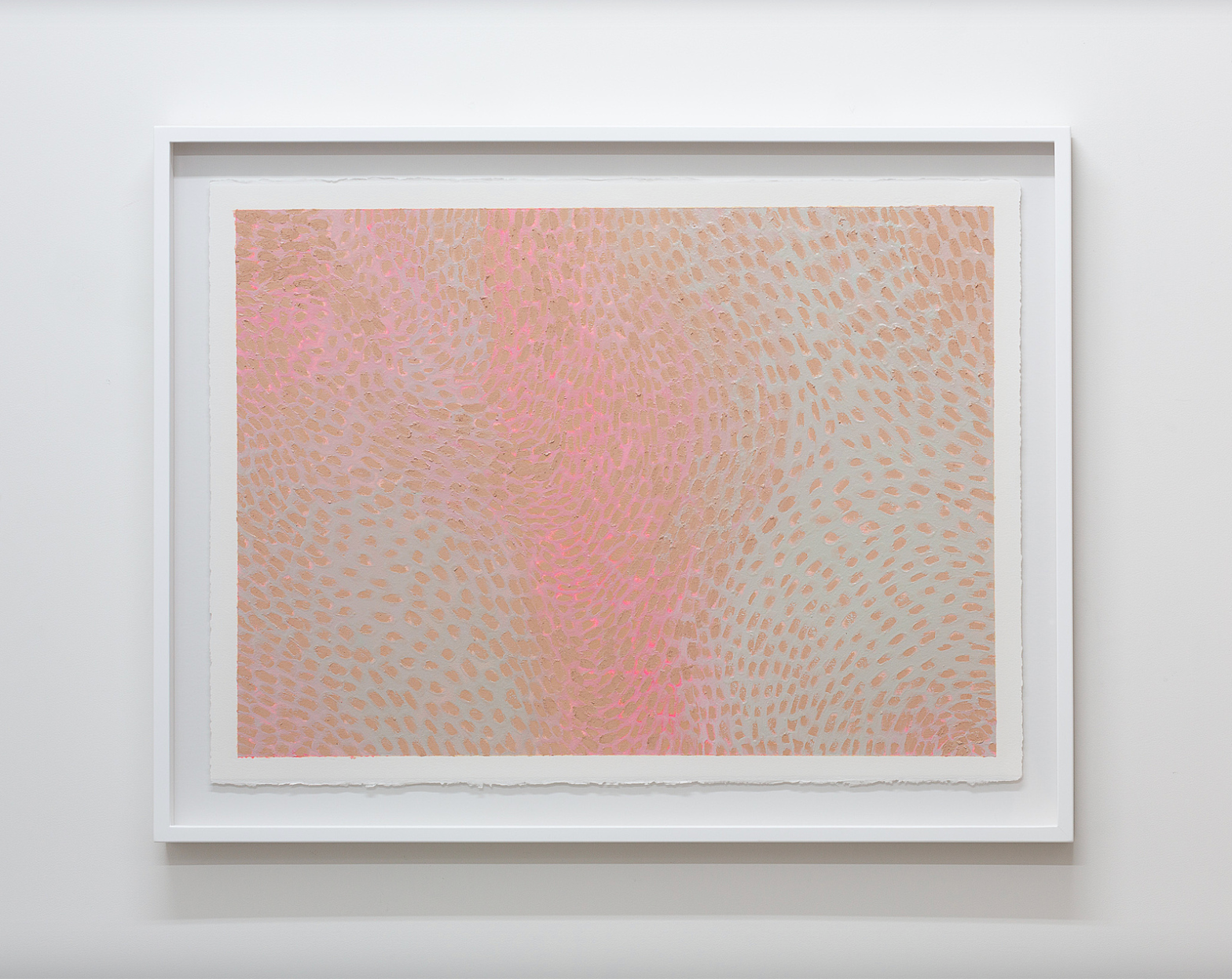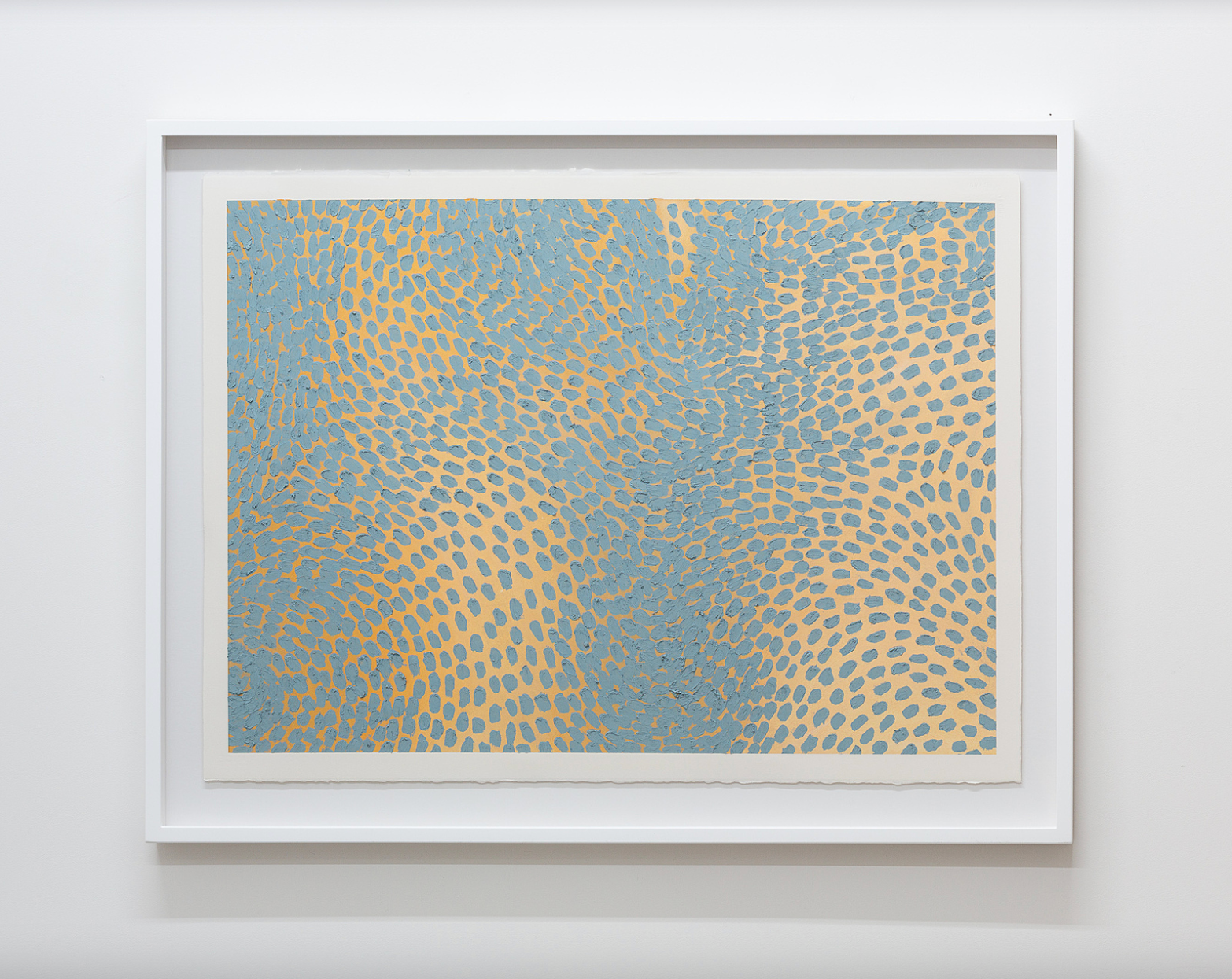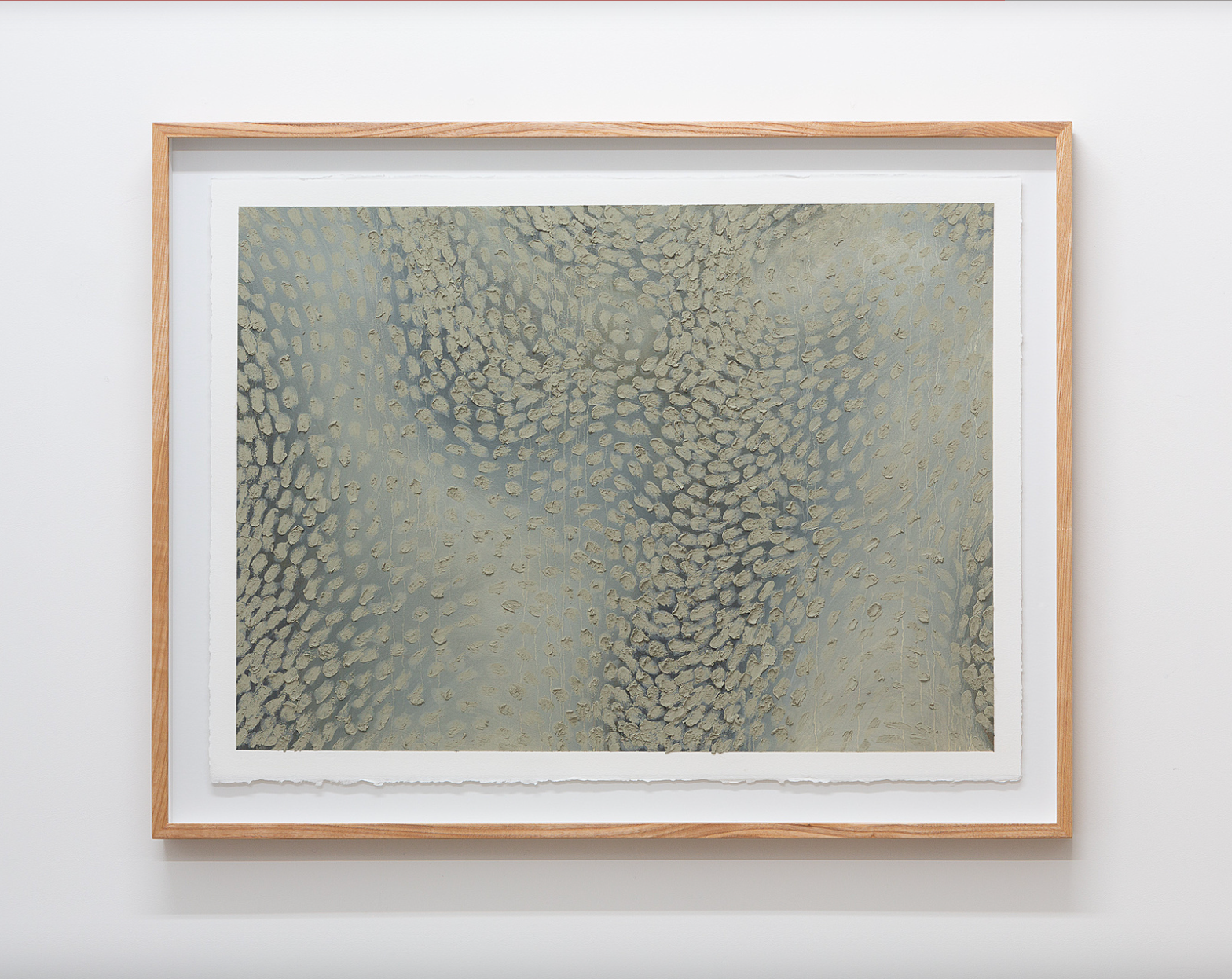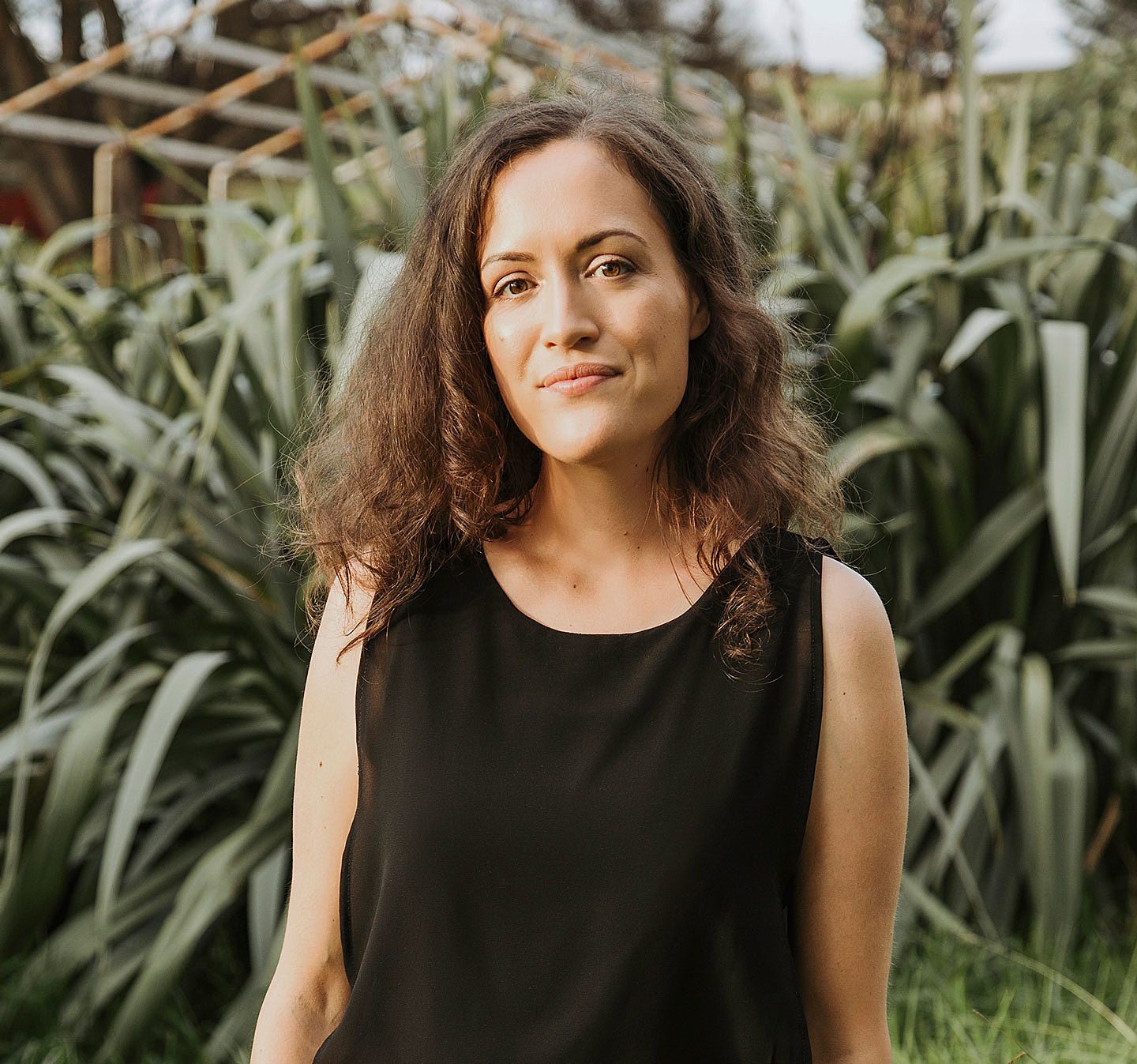Painting With Whenua: An Interview with Raukura Turei
Raukura Turei paints with natural clay pigment, evoking the sensuality and sovereignty of atua wāhine. Jade Kake speaks with the artist.
Raukura Turei paints with natural clay pigment, evoking the sensuality and sovereignty of atua wāhine. Jade Kake speaks with the artist.
It started with grief. Raukura Turei is candid when she talks about the origins of her visual art practice. Initially is was repetitive movement, more than anything else. Mark making, surrendering to the mindless actions of her body. From the depths of a Canadian winter, alone after a separation, she found solace in putting pastel to paper on every kitchen table she found. On days spend alone in a friend’s apartment, so as to not have to actively dwell on the turbulent events of her present; and perhaps, to avoid giving thought about what might lie ahead. Recalibrating, rebuilding a life and an understanding of one’s self.
When I meet Turei at her Freeman’s Bay home on a bright Auckland spring day, she couldn’t be further, physically and mentally, from the place where her work was first conceived. “I’m probably in the best space I’ve ever been,” says Turei, almost eight months pregnant. She welcomes me into her living room, which also doubles as her studio. The space is light filled, sparsely furnished, and filled with books and art and plants. We sit on the floor and share kai and a kaputī.
A work in progress, Te poho o Hine-Ruhi (2019), runs the length of this relatively small room; quite literally filling the space. The canvas, alive with iridescent colours, has an appearance akin to an oil slick. Turei tells me that this is a base layer and is now close to finished. She is waiting for the paint to dry before the final coat can be applied. It takes me a few minutes of looking closely to locate a human form amongst the swirls of colour. The heavy daubs of aumoana (uku kahurangi or blue clay), which characterise the works of this series, will be applied with her fingers over the top of this base layer. Turei gestures to another work on the adjacent wall to indicate what comes next. An experiment – the clay, she has discovered, is too heavy for most papers, this technique really works best on a rigid surface.
My architectural training allows me to think spatially with my art – but I do feel a kind of freedom when I paint that isn’t available to me in my architectural work.
One of the things that sets Turei apart from many of her peers is that, while she is a trained and practising architect, she does not possess a formal training in the field of fine arts. Turei tells me that she considers this to be an advantage; that her ability to freely experiment with both technique and medium are a result of her being largely self-taught. I ask her whether her visual arts practice has influenced her architectural work, or vice versa. Perhaps a too-obvious question. She pauses, then responds thoughtfully, “More the other way, my architectural training allows me to think spatially with my art – but I do feel a kind of freedom when I paint that isn’t available to me in my architectural work.” Exploring her visual arts practice offers a kind of respite, the kind of free form creative work that brings balance to the more rigidly constrained profession of architecture. “The constraints are very different,” she tells me. “In my visual work, I’m really only limited by what the medium can and cannot do.”
The introduction of uku (clay) and the use of hybrid polymers occurred last year when Turei was commissioned by the Adam Art Gallery Te Pātaka Toi, Wellington, to produce Te poho o Hine-Ruhi (2018). A large-scale in situ work, it occupies the space originally designed for Colin McCahon’s monumental Gate III (1970), within the gallery’s Ian Athfield-designed building of vertiginous proportions. Turei quickly realised that the sheer scale of the work would make the use of oil pastels a logistic impossibility. The hybrid clay polymer was devised by Turei as a solution to this problem of scale. The use of uku was doubly important as it also enabled Turei to better convey some of the key ideas present within her work, through a literal use of whenua.
The current series uses a base layer of oil, with a clay super-layer. Turei makes her own base paint with oil, pigment and oil pastels. The application is a kind of rubbing, blurring, combining. The clay paint – the surface layer – is produced using natural clays, water and acrylic binding medium. While Te poho o Hine-Ruhi (2018) involved store-bought non-firing clay, Turei has since been experimenting with locally sourced clay called aumoana. The mixing implement of choice is a practical one – for Te poho o Hine-Ruhi (2018), a cement mixer; for the current series, a domestic stick blender. The clay is soaked, then blended with admixes to achieve an appropriate consistency and ability to adhere to the work’s surface.
Turei shows me this process in her bathroom, the other half of her studio. The clay is the last of a batch collected from a riverbank near her Ngāitai Ki Tāmaki whenua. She shows me photos of raw clay and the resultant paint (utilised on earlier pieces), and I’m struck by the brilliance of the natural pigment. Watered down and mixed with acrylic medium the resulting colour is a powdery, earthy blue. The clay layer is applied by hand – Turei uses her fingers to apply the clay paint directly to the canvas, producing a series of evocative, repetitive marks, a thematic continuation of earlier strokes using pastel.
The blue colour of the aumoana clay paint evokes that interstitial time, just before dawn. This time that has always had significance for us as Māori.
Ngā Kārohirohi 1–6 (2019), part of the current series of layered works with oil, oil pastel and raw pigment applied to cotton rag. In 2–4 & 6, Turei utilises oil pastels to form the super layer. The technique is similar to that utilised in the SELF series, this time with an oil base layer. In Ngā Kārohirohi 1 & 5 (2019) Turei introduces a new technique – a layer of oil seals the base layer, and while the oil is still wet, the super layer is applied using oil pastel to scrap away the sealing layer, and at the same imprinting pigment from the pastel and revealing the pigment below.
Turei’s work has been strongly directed from a technical perspective, through these experiments with medium and technique. I’m curious to know whether she might begin to utilise kokowai and other Indigenous pigments too? When I ask, she’s not eager to pre-empt future explorations and experimentation. She’s aware of other artists who are occupying this space through either a traditional or experimental lens, and she’s not eager to replicate, and besides – she is yet to exhaust the possibilities of the aumoana clay medium she is current working with.
The blue colour of the aumoana clay paint evokes that interstitial time, just before dawn. This time that has always had significance for us as Māori. Moving between the layers on the canvas evoke the wiriwiri, the flickering, moving between spaces, states. It’s easy to get lost in the canvas, in a sea of thoughts and associations. I think about those long karakia that occur just before the dawn, before the sky breaks, I think about my own whenua and its silty clay soils, the shimmering blue of the harbour at dusk. As I gaze at the canvas, I think about my tūpuna whaea, the women from whom I descend.
Women can be provocative, sensual, leaning into our own sexuality in a way that centres neither the male nor the colonial gaze.
We speak about our connections to whānau, whakapapa, whenua, and the diversity of experiences that connect us as wāhine Māori. Themes Turei has long been exploring in her creative work, irrespective of medium.
In her final-year architecture thesis, Looking Up Skirts (Te Hiki a Hine-Ruhi), Turei explored the re-vitalisation of the Whare Tapere, a pre-colonial space for Māori performing arts. The title – a proverb referring to the lifting of skirts (drawn from the narrative of Tinirau and Kae), performed in an act of provocation by a group of wāhine led by Hine-te-Iwaiwa. What I take from this, is that women can be provocative, sensual, leaning into our own sexuality in a way that centres neither the male nor the colonial gaze. There’s a strength in this framing, this reclaiming, a thread that runs through Turei’s entire body of work.
Turei’s more recent layered works have grown out of a period of re-building, and reacquainting with herself as an independent woman has in turn brought to light the issues many women face around their sensuality and sovereignty of their own bodies. To shift the gaze from her own experience she calls reference to significant atua wāhine as the epitome of female empowerment. She speaks of deities such as Hine-Ruhi (the dawn maiden), Hine-te-Iwaiwa (atua of fertility and te whare pora – female arts), Hine-Awatea (first light of day) and Hina-uri (deep charcoal light) whose vitality and sensuality are captured in the glimmering movement of the works. The shifting quality of light evoked by atua wāhine dance across the canvases.
The works in the current series are all based on photographs Turei takes of her own body, although sufficiently abstracted through the making process so that this isn’t immediately apparent within the final work. The process of making, Turei tells me, takes her outside of her own body, outside of herself. In their abstraction these portraits take on a sort of universal quality, and the soft shimmering forms suggest landscapes, bodies. Ngā wāhine, ngā whenua.
Raukura Turei
Te poho o Hine-Ruhi
Sumer gallery, Tauranga
19 October – 16 November 2019
This article is an extended version of the exhibition catalogue text.
All photographs by Daniel du Bern at Sumer Gallery, courtesy of Raukura Turei.
